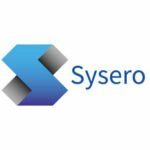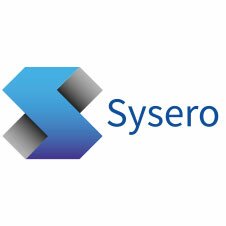Sysero: Compliance and Efficiency – Rethinking the client onboarding experience
Adopting and implementing effective compliance policies are an essential part of any law firm’s risk management. Yet, many firms continue to struggle with the challenge of delivering efficient client onboarding, whilst ensuring compliance with various KYC, AML and UK GDPR rules. Many firms still rely on manual processes and disparate technology solutions to manage client onboarding, which only slows down client acceptance and increases risk.
Ultimately, the goal for any law firm is to strike the optimal balance between fast, efficient service and a strong compliance culture, in order to reduce risk for each lawyer and the firm, and ensure the firm is operating within the regulations.
So, how can law firms drive greater efficiency in the onboarding process, whilst reducing risk? By combining well-developed compliance policies with the right technology solution, firms can create a streamlined and integrated client onboarding process within a robust compliance framework.
Here’s how to start the process for your firm:
Create risk profiles
The first step in creating a compliance-driven process is to know your customer, and setting up risk profiles is a great place to start. Building a series of risk profiles enables you to set parameters against which to assess potential clients based on their level of risk. Risk comes in many forms, so it’s crucial to spend the time to create a robust risk assessment framework that aligns with your firm’s specific tolerance level.
Take for example, Simonsen Vogt Wiig’s digital onboarding solution. The cloud-based solution automatically assesses the risk of new clients based on a predefined set of rules determined by the firm’s priorities, including professional risk, terms alignment and GDPR compliance. A risk profile is then created for each new client, enabling the firm to easily identify and escalate high-risk clients for further review.
While technology makes it easier to streamline risk assessment, the process starts with a strong understanding of the risks to consider. Clear articulation of factors that reduce or heighten risk will help determine the client information that’s required to appropriately assess new business opportunities.
Identify areas ripe for automation
There’s no doubt that some areas of your onboarding and acceptance process could benefit from technology. The key is to identify which parts of the process could be improved with automation, and which parts benefit from the nuanced decision-making of your lawyers or staff. Workflow automation can – and should – be employed to ensure that the appropriate data collection processes are completed, decisions are routed to the correct internal staff, and key technology systems work together.
The technology needs to be able to capture data and verification documentation from client-facing lawyers, route the information and notify key staff and capture their decisions. It should also be able to send reminders if the on-boarding process is taking longer than expected and route approved matters to the accounts team to create the client/matter records. Throughout the onboarding process, the automation process may need to draw information from other internal systems and post data and documents to accounts and DMS systems. Finally to complete the onboarding process, the automation process needs to notify the originators of the new client and matter details.
One of the most important benefits of an automated on-boarding process is that the technology creates an audit trail detailing when the information was entered, which verifications were completed, who made decisions and reasons for those decisions.
For example, Wikborg Rein’s digital client onboarding solution replaced many of the firm’s manual onboarding processes and disjointed technical solutions. By employing workflow automation, the firm was able to streamline the client intake process to reduce acceptance time, improve quality and ensure compliance with regulation. Any client or case that falls outside of the firm’s risk requirements, is automatically routed to a simplified workflow for further assessment and review. Once approved, the new client or case is automatically created in the firm’s integrated internal systems.
By understanding which areas of the process would benefit from automation, Wikborg Rein was able to create a streamlined system that not only makes it easier to register new clients and cases, but also provides the necessary internal approvals and compliance documentation.
Build a plan to deliver
Once you understand how to architect your client onboarding process, incorporating automation, you can begin to create a plan for building your solution. As part of this process, you’ll need to assess the industry technology solutions available to help create a streamlined digital onboarding and acceptance process. Each firm has a unique on-boarding process dictated by the firm’s areas of law and the existing internal systems. The technology should allow firms to design their own process and integrations with in-house systems and be able to modify these processes even after the system has gone live.
While there are plenty of technology options available, it’s critical to select the right solution that aligns with your firm’s needs. For example, Syero’s technology can be used to build a custom digital onboarding solution in as few as six weeks. To check out an example of the solution, you canview a live demo here.
As the need for compliance, auditing, data security and greater efficiency continues to mount, automation technology offers firms a way to transform the client onboarding process and ensure compliance protection. Advancements in both data management and technology have made it easier than ever for firms to increase speed and transparency within the process, providing better service to clients and enhancing protection for the firm.
To learn more about how Sysero can help your firm develop and implement a custom digital client onboarding solution, get in touch with our team or visit our website.



